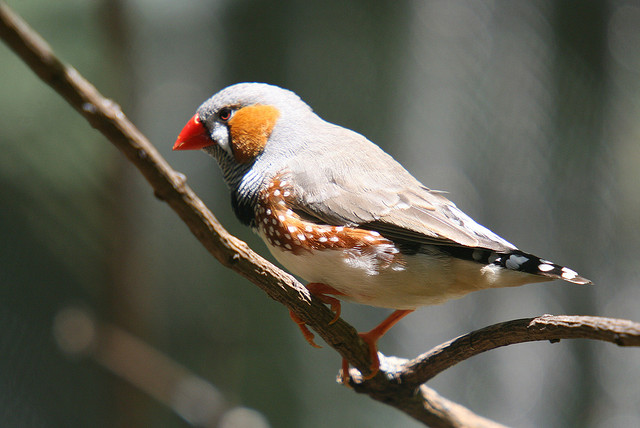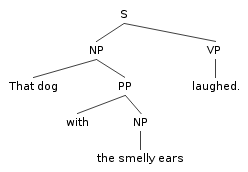
Young children have an uncanny ability to pick up new languages. Not only do they soak up vocabulary, they also construct new sentences of their own. This ability to use grammar is the essence of language. It’s not enough to know the meanings of words, you also have to understand the structures and rules by which words are put together.
The predominant view has been that humans are unique in this ability. But any time that we utter the words ‘uniquely human’, scientists seem to take it as a challenge to disprove this notion. And language is no exception. If you’re looking for the species that most closely matches our linguistic prowess, surprisingly, you won’t find it in the apes, the primates, or even in the mammals. You have to travel to a far more distant relative, all the way to a family of birds known as the songbirds.
The vocal life of a songbird is similar to ours in many ways. They learn songs by imitating their elders. Like human speech, these songs are passed down from one generation to the next. Songbirds are also best equipped to learn songs in their youth, and they have to practice to develop their ability. They can improvise and string together riffs into new songs, and over generations these modified songs can turn into new dialects. And like us, they come hard-wired with ‘speech-centers’ in their brain that are dedicated to language processing.
But languages are not just learned, they can also be invented. A striking example comes from the deaf community of Nicaragua in the 1970s. Back then, deaf people in Nicaragua were isolated both physically and through language. By the 1980s, the government set up schools for the deaf to teach them Spanish and how to lip-read. This turned out to be an unsuccessful endeavor. The teachers were growing increasingly frustrated as they were not getting through to the students.
However, things were quite different from the point of view of the students. For the first time, they were in contact with many other deaf people, and they started to exchange gestures that they had invented in isolation. At first the teachers thought this gesticulation was a kind of mime, but the reality was far more interesting. By getting together and pooling their ideas, these children had actually invented a new type of sign language, complete with its own grammatical structure. Here was proof that a new language could be born out of cultural isolation, a testament to our innate abilities to understand grammar. And in a few generations, users of this language were employing newer, more nuanced grammatical structures.
And this re-invention of language has been mirrored in the songbirds. An experiment from 2009 by Fehér and colleagues took newly hatched songbirds of the zebra finch species and raised them in sound proof chambers. They did this during their critical period of language development. Much like the Nicaraguan children, these birds were raised in a world without song. What happened next is quite surprising.
Just like the children, this culturally isolated generation of birds began to develop their own songs. These songs were less musical than your typical songbird song – they had irregular rhythms, they would stutter their notes, and the notes would sound more noisy. But the researchers were curious where this would lead. They listened to the songs of the next few generations of pupils, the offspring of these children of silence. What they found was quite amazing. In just two generations, the songs started to change in unexpected ways – they were becoming more musical. In fact, they started to converge upon the song of the wild songbirds, even though none of these birds had ever heard the wild songs.
I find this a rather poetic thought – these songbirds are somehow carrying within them the songs of their ancestors. This study suggests, but does not prove, that songbirds must have an innate understanding of the structures of their language. In other words, they seem to have a built-in intuition about grammar. Over time, they may be using these intuitions to develop their phrasing and tone.
And a new study by Kentaro Abe and Dai Watanabe published in today’s issue of Nature provides strong evidence for this idea. They focused on a species of songbird called Bengalese finches. The researchers wanted to understand what sorts of songs these birds consider to be similar, and what are the features that make a song sound different to them. But how do you measure what a songbird is thinking?
The way the researchers went about doing this is downright ingenious. When a songbird hears a song sung by a member of its own species, it calls out in response. The researchers would play a song to the bird many, many times. After hearing the same song being repeated over 200 times, even the most eager bird has lost interest, and their responses dwindle away. If you now play a new song, then two things can happen. The bird may find the song similar to what it has already heard, in which case it will pay it little interest. Or it may find the song to be novel, and sing more frequently in response. So by measuring how the songbird’s response changes with a new song, you can find out whether the bird can differentiate between the songs. It’s a technique that’s familiar from our everyday conversations – you can hear when your buddy is losing interest, and when they perk up to a new story.
The researchers trained the songbirds on a particular song, and then measured their responses to slightly altered songs. What they found is that the birds could notice the difference between some variants of the song, and not between others
What kind of differences were the birds latching on to? It wasn’t the notes. Although the songs were different in a few notes, the birds would not notice the difference if you changed the songs one note at a time. Rather than responding to local changes (such as a note out of place here and there), they were somehow assessing the song as a whole. Perhaps they can understand the sentence structure?
To test the hypothesis that the songbirds are responding to changes in grammar, the researchers did something quite remarkable. They taught grammar to the songbirds. They did this by inventing a set of grammatical rules, and generating 50 songs that obeyed these rules. They played these songs on repeat to the birds for an hour. Think of it as a schoolteacher drilling 50 sentences into a reluctant pupil. They then waited 5 minutes, and played the birds a new song that either fit this grammatical rule, or broke the rule. And you can guess what they found. The birds were not surprised to hear the new grammatical sentences, whereas the ungrammatical sentences would ruffle their feathers, so to speak. The birds were able to assimilate the rules of this new grammar!
“Aha!”, says the human-supremacist. “You’ve cunningly shown that these finches can learn the rules of grammar. But the grammar you’ve invented is a simple one. Human speech is far more sophisticated. For example, we can nest one sentence within another. These birds, although quite clever, surely can’t cope with such complexity.”
What our human-supremacist friend is talking about is an idea put forward in the 1950s by the linguist Noam Chomsky. He suggested that you could think of the grammar of human languages as a set of rules. By repeated use of these rules, you could go on to generate a whole lot of grammatical sentences. Starting from these rules, you could arrive at sentences like:
1. That dog laughed
2. That dog with the smelly ears laughed
3. That dog with the smelly ears that the cat disliked laughed
and so on. But you would never arrive at a sentence like:
4. That dog the smelly ears laughed
because such a sentence would violate Chomsky’s grammatical rules.
The researchers tested our embarrassing friend’s idea. Through repeated playback, they trained the finches on a set of grammatical songs, somewhat analogous to sentences 1 and 2 above. What they found is that finches with this training were not surprised by grammatical songs like sentence 3, even though these songs included an extra embedded clause. However, they would react to songs like sentence 4, that did not fit into the structure of this grammar.
Think about how incredible this is. These finches are able to understand and generalize the rules of a grammar as complex as our own.
The researchers didn’t stop there. By raising finches isolated from adults in sound-proof chambers, they were able to show that this grammatical talent is partly learned, and partly an innate ability. That is, finches that have never head the birdsong of their elders can still absorb many of these grammatical rules. And if you introduce them to their elders, over a few weeks their education in grammar will be complete. They soon become as discerning as their mentors.
What is the biological driving force behind this talent for grammar? Our brains have specific regions that ‘light up’ when we listen to a grammatically invalid construction. People who suffer damage to a specific area of the brain known as Broca’s region have an impaired ability to understand and produce grammatical speech. The authors claim to have identified regions in the finches’ brains that are necessary for their grammatical talent. By specifically removing this piece of the brain, they were able to show that the birds that went through this surgery were less competent at detecting grammatical differences.
The story of the songbirds is one of piecing together the language of the birds, and it takes us back to an ancient metaphorical quest. Many religions and mythologies have considered the language of the birds to be a symbol of great wisdom. Alchemists and practitioners of Kaballah thought it the key to perfect knowledge. Norse mythology speaks of two ravens named Huginn and Muninn (the old Norse words for thought and mind) that belonged to the god Odin. Huginn and Muninn would scour the Earth in search of news. When they returned, they would sit on Odin’s shoulders and fill him in on the affairs of mortals. I wonder what they would tell Odin about these modern-day augurs who are steadily deciphering the source of his wisdom.
References
Kentaro Abe, & Dai Watanabe (2011). Songbirds possess the spontaneous ability to discriminate syntactic rules Nature Neuroscience DOI: 10.1038/nn.2869
Fehér, O., Wang, H., Saar, S., Mitra, P., & Tchernichovski, O. (2009). De novo establishment of wild-type song culture in the zebra finch Nature, 459 (7246), 564-568 DOI: 10.1038/nature07994
To hear more about the Nicaraguan sign language, and other interesting stories about Words, check out the radiolab episode by the same name.
Image References
Opening image: an 18th centuty Icelandic manuscript depicting Odin, Huginn and Muginn. Wikimedia Commons.
Zebra Finch by Marj Kibby. Creative Commons.
Bengalese Finches image was taken from the press material provided with the paper.
That dog with the smelly ears laughed. Image and example courtesy Adam Parrish.


